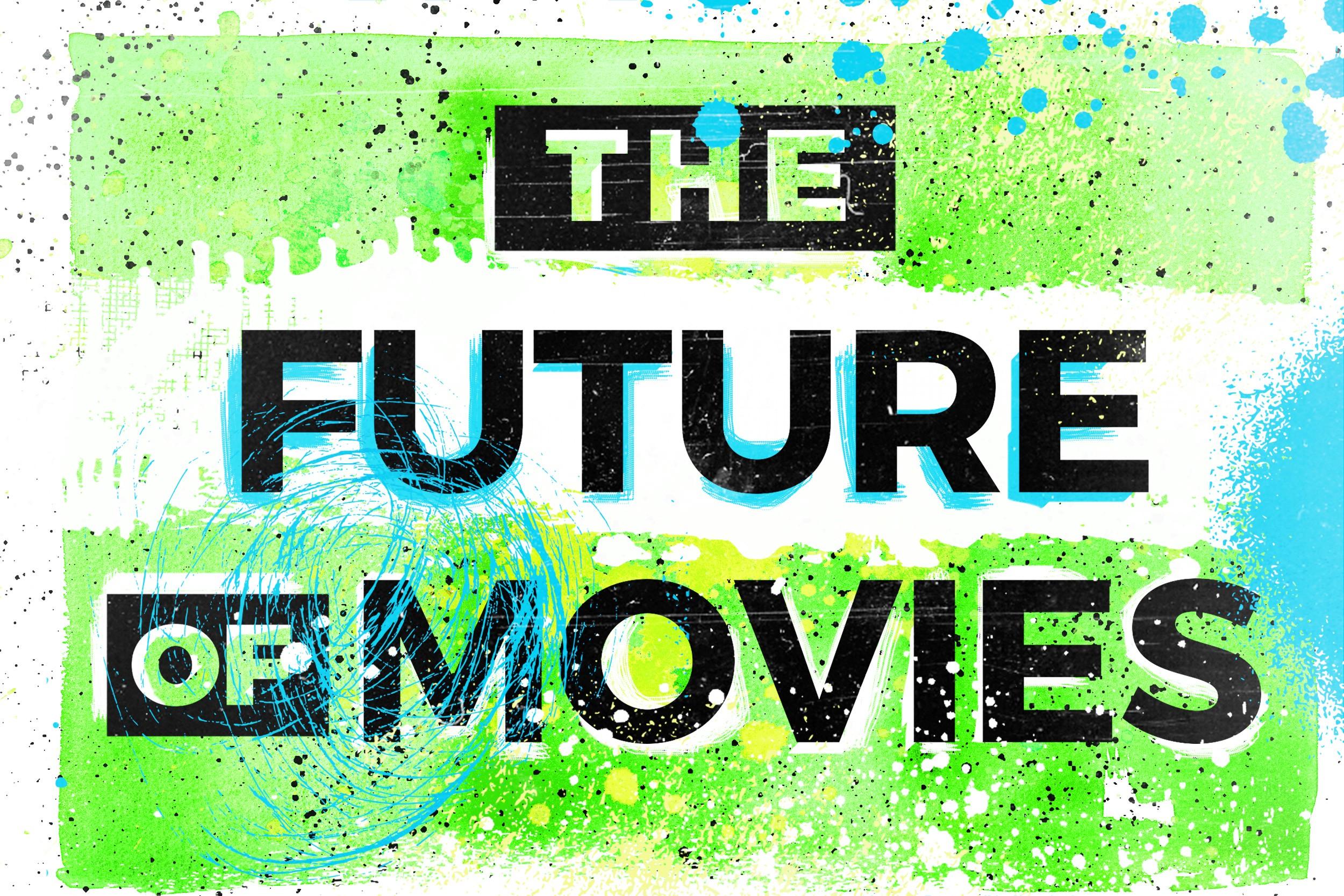
Welcome to Future of Movies Week. Too often this year we’ve been left baffled at the multiplex. It’s been 10 months, and we’re struggling to come up with a viable top-10 list. Streaming platforms are encroaching on Hollywood’s share of our collective attention, preexisting intellectual property is providing diminishing returns, and moviegoers largely skipped Jack Reacher: Never Go Back. Wild days.
November will be different. It’s packed with interesting releases — Oscar contenders like Loving and Arrival and Manchester by the Sea, blockbusters from Marvel (Doctor Strange) and J.K. Rowling (Fantastic Beasts and Where to Find Them), a Disney movie with Lin-Manuel Miranda and the Rock (Moana), and old-fashioned fare from big-name directors like Robert Zemeckis (Allied) and Warren Beatty (Rules Don’t Apply).
This week, we’re looking at the future — of film school, horror, the Marvel Universe, movie stars, and the medium itself.

‘Race Is the Past and Future of Horror Movies,’ K. Austin Collins

“It’s a well-known, oft-told bit of cultural logic about blacks in horror movies: We don’t seem to stick around. Either we have too much sense to go exploring the unknown or we die early on (though not usually first). We’re never the final girl. There’s a bit of condescension in this absence, a hint of: Don’t black people already have enough problems?
Well, yes, and attempts at black horror narratives often acknowledge as much. But they’re also a chance to play with style.”

‘Directors out of Carolina,’ Eric Ducker

“[University of North Carolina School of the Arts] was founded in the early 1960s, and for decades it has drawn in misfits from around the South to its five conservatories. The more established drama program’s alumni include Mary-Louise Parker, Joe Mantello, Anna Camp, and Dane DeHaan.
Since its beginning in 1993, the film school has emphasized the technical aspects of the discipline. Because of its geographic separation from the entertainment industry, School of the Arts’ curriculum prioritized teaching students the skills to work on sets as soon as they graduated. ‘From day one you get to start shooting,’ says Rebecca Green, a School of the Arts graduate who produced acclaimed indie films It Follows and I’ll See You in My Dreams. ‘It’s a level playing field.’”

‘Building the Perfect Movie Studio,’ Ringer Staff

Ringer staffers who obsess over movies to draw up plans for their dream studio — the name, the philosophy, the slate of production (one piece of underused IP and one movie to develop), and the talent on hand. Lights, camera … action.

‘The 2027 Oscars Are Going to Be Crazy,’ Sam Donsky

“The consensus surrounding American Election is that it represents the major work of Streep’s life — and one would be hard-pressed to disagree. The scene where she wipes off her makeup, takes off her Trump hat, takes off her Trump wig, climbs out of her body suit, turns to the camera, and says, ‘I honestly forget how many Oscar nominations I have’ — it’s so … I don’t know: levitating, and yet humanly grounded. And when she hits ‘publish’ on the Hillary meme, in the film’s last shot, while humming ‘God Bless America’ (Deer Hunter callback?), and stroking the head of an Oscar trophy like the mother to a spoiled child: It feels like a total reinvention of the form — while still remaining, somehow, purely Streep.”

‘Scare Tactics,’ Chris Ryan

“Here’s the pitch: a single mother. A grieving family. Los Angeles, 1967. A city on the precipice of social revolution, as the tragedies of the 20th century echo through everyday life. Two young sisters, coming of age in the shadow of their father’s death. Small, battered lives, caught up in something bigger than they can possibly understand.
How does this get made in 2016? It’s nearly impossible without the gravitational pull of a bona fide movie star, the clout of a powerful director, or the deep pockets of a Medici-like figure financing the project. It really helps to have all three. American dramas have largely migrated to the small screen, where audiences are content to spend hours watching characters fall in and out of love, change their lives, or stay the same. Family dramas litter network television, basic and premium cable, and streaming serves. They could eventually become extinct on the big screen.”

‘The Unfilmed Future of the Marvel Universe,’ Jason Concepcion

“In 2012, Marvel’s The Avengers changed the movie landscape and ushered in the shared-universe era. It is no longer enough to adapt a single comic-book hero for the big screen. Success is now measured by a studio’s ability to assemble (pun intended) a self-contained web of interlocking intellectual property. It seems quaint to recall a time when Iron Man, Captain America, Thor, Hawkeye, Black Widow, and the Hulk were deemed, by many, to be B-level heroes.
Marvel has sketched out its schedule from this week’s Doctor Strange all the way out to 2019. The question is: Are there any Marvel Comics stories left to adapt? Of course there are.”

‘The Leading Man Has Left the Building,’ Sam Donsky

“Friday marks the release of three wildly different films, starring three relatively established actors, each with a distinct — and in many ways, distinctly uncertain — claim to leading man-dom: Doctor Strange, starring Benedict Cumberbatch; Hacksaw Ridge, starring Andrew Garfield; and Loving, starring Joel Edgerton.
Are any of them “leading men?” Based on the historical definition — a movie star who can carry a film to box office success — none of the three actors is close. These aren’t household names, in the strictest sense — there’s no Hanks here, no Washington, no Pitt, no Cruise; not even an Affleck or a Damon. And if you haven’t been an avid moviegoer over the past few years, then you might not know them at all.
But on the other hand: in 2016, you might not need to.”

‘What Five Breakthrough Directors Can Teach Us About the Future of Movies,’ K. Austin Collins

“Who are the most exciting filmmakers in contemporary American cinema? In an era of superhero-movie fatigue and franchise retreads, it can feel like a dubious question. Film is not television, where audiences are now tuned in to star showrunners like Matthew Weiner and Shonda Rhimes. In comparison, the name-brand value of filmmakers is losing its sheen. We still have Tarantino and Scorsese and Eastwood, Sofia Coppola and Spike Lee: auteurs with name recognition, whose movies generate heightened interest from longtime fans (and detractors). But the new generation of buzzworthy directors is increasingly subsumed under studio and distributor brands, big and small. Aficionados of low-budget horror keep tabs on Blumhouse. Those aching for exciting midbudget indie movies go gaga for A24. And everyone knows Marvel.
There are still, however, filmmakers we believe in. Filmmakers we know by name; filmmakers whose work we seek out and whose upcoming projects we anticipate on their merits, and not their IP.”

‘How to Avoid a Box Office Disaster,’ Ben Lindbergh

“‘Once we get the results in for any given study,’ Lynn says, ‘I know that we have specific information and knowledge about something potentially incredibly major — and where many millions of dollars are on the line — that no one else necessarily knows.’ If that sounds a little like a thriller, in which the protagonist sees disaster looming but is powerless to stop it, Lynn won’t mind. His stats say that thrillers sell well.”

‘Playing Dead,’ Sean Fennessey

“There is a canard that has emerged in the cultural conversation in recent years — ‘Movies are dead.’ It intermittently emerges on social media, typically around the time an invigorating new TV show drops on Netflix or the Emmys wrap up or a prospective blockbuster lands with a thud. Arrival and a handful of other new movies releasing in the last quarter of the year offer a rebuke to this increasingly conventional wisdom: Movies aren’t just for superheroes and Minions. But no matter their quality, they reveal a lot about how compartmentalized and marginalized movies have become in the consciousness.”

‘Films of the Forever War,’ Adam Nayman

“It’s possible that Billy Lynn’s Long Halftime Walk will transcend its initial technological controversy, but regardless of Lee’s double-Oscar-winning pedigree — or the bona fides of his cast, which includes Steve Martin, Kristen Stewart, Vin Diesel, and Chris Tucker alongside the unheralded Joe Alwyn in the title role — movies about U.S. wars in Iraq and beyond have rarely done solid box office, even if they have big names attached. And, with very few exceptions, they haven’t endured in the popular imagination, either. In 2013, Salon’s Daniel D’Addario examined this phenomenon, quoting the venerable film critic and scholar David Thomson on why a decade-long run of movies reflecting an unpopular foreign war almost completely failed to connect with the public imagination: ‘In general, I don’t think audiences like war films about wars that are still going on.’”

